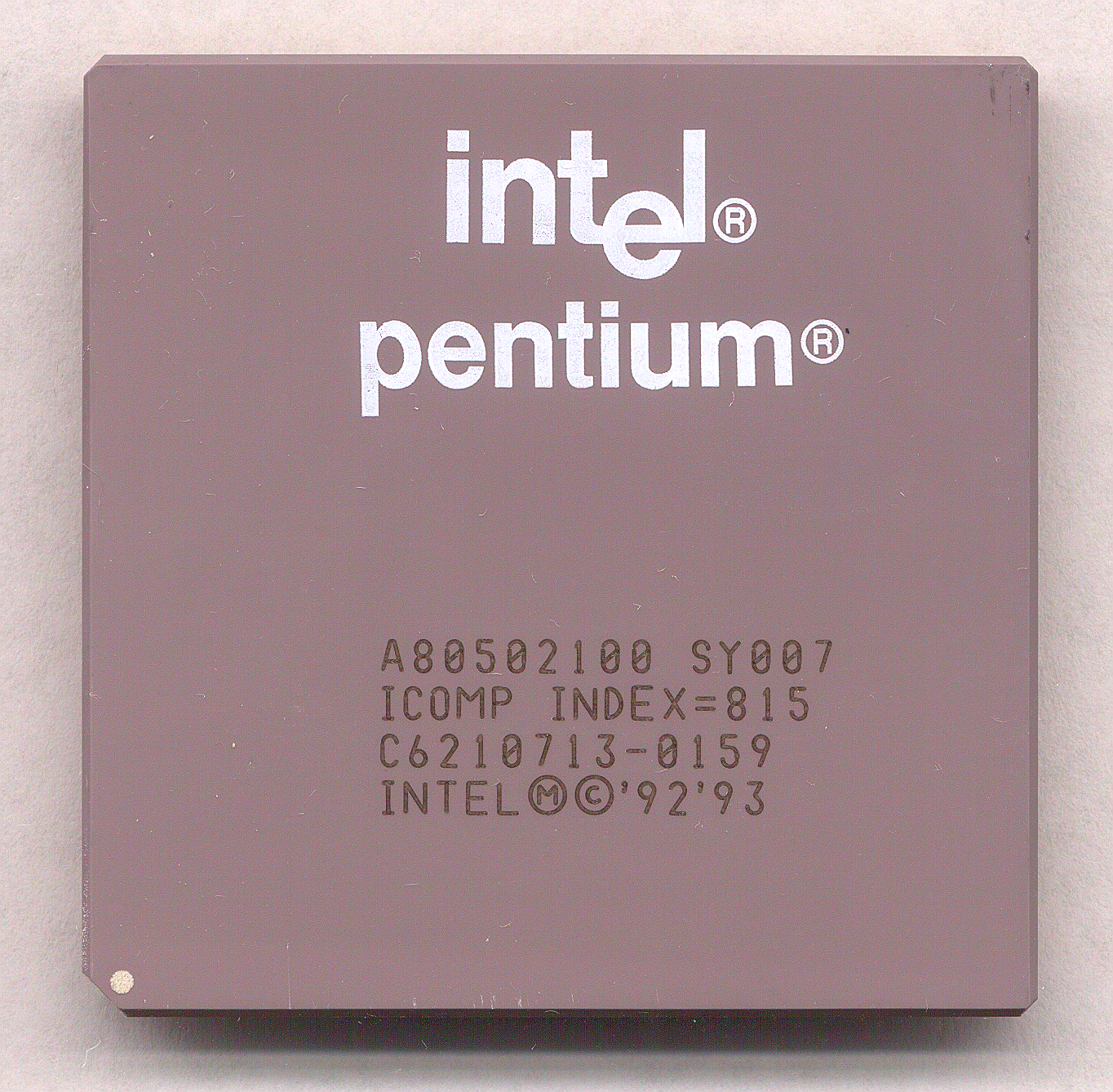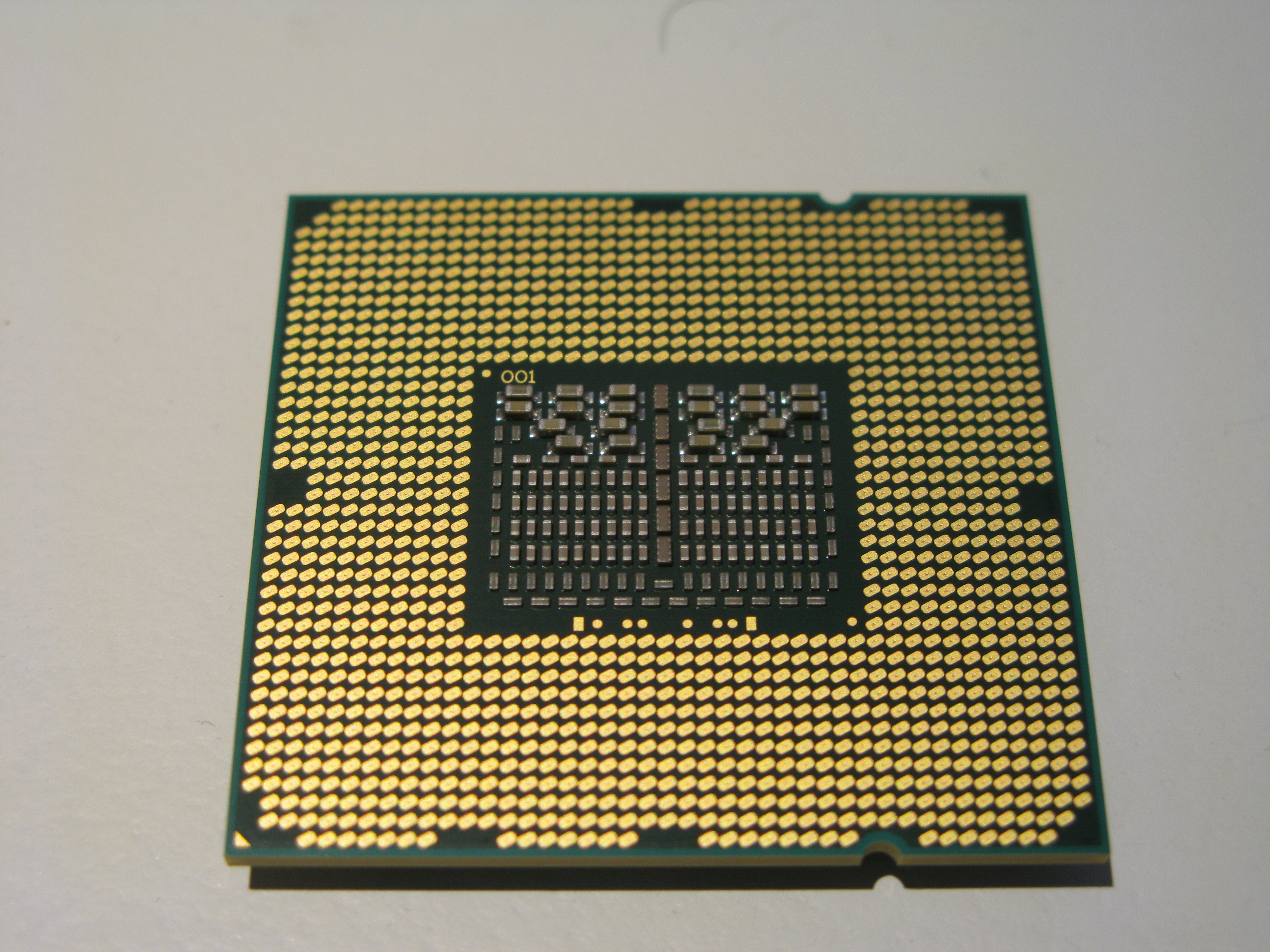|
Intel Core 2
Intel Core 2 is the processor family encompassing a range of Intel's consumer 64-bit x86-64 single-, dual-, and quad-core microprocessors based on the Core microarchitecture. The single- and dual-core models are single-die, whereas the quad-core models comprise two dies, each containing two cores, packaged in a multi-chip module. The Core 2 range was the last flagship range of Intel desktop processors to use a front-side bus. The introduction of Core 2 relegated the Pentium brand to the mid-range market, and reunified laptop and desktop CPU lines for marketing purposes under the same product name, which were formerly divided into the Pentium 4, Pentium D, and Pentium M brands. The ''Core 2'' processor line was introduced on July 27, 2006, comprising the ''Duo'' (dual-core) and ''Extreme'' (dual- or quad-core CPUs for enthusiasts), and in 2007, the ''Quad'' (quad-core) and ''Solo'' (single-core) sub-brands. Intel Core 2 processors with vPro technology (designed for businesses) i ... [...More Info...] [...Related Items...] OR: [Wikipedia] [Google] [Baidu] |
List Of Intel Core 2 Microprocessors
The Core 2 brand refers to Intel's x86 and x86-64 processors with the Core microarchitecture made for the consumer and business markets (except servers) above Pentium. The Core 2 Solo branch covered single-core CPUs for notebook computers, Core 2 Duo – dual-core CPUs for desktop and notebook computers, Core 2 Quad – quad-core CPUs for desktop and notebook computers, and Core 2 Extreme – dual-core and quad-core CPUs for desktop and notebook computers. Desktop processors Dual-Core Desktop processors Core 2 Duo = "Allendale" (65 nm, 800 MT/s) = *All models support: '' MMX, SSE, SSE2, SSE3, SSSE3, Enhanced Intel SpeedStep Technology (EIST), Intel 64, XD bit (an NX bit implementation), Intel Active Management Technology (iAMT2)'' * Die size: 111 mm2 * Steppings: L2, M0, G0 Note: The M0 and G0 Steppings have better optimizations to lower idle power consumption from 12W to 8W. Note: The E4700 uses G0 Stepping which makes it a Conroe CPU. = "Conroe" ... [...More Info...] [...Related Items...] OR: [Wikipedia] [Google] [Baidu] |
Pentium
Pentium is a brand used for a series of x86 architecture-compatible microprocessors produced by Intel. The original Pentium processor from which the brand took its name was first released on March 22, 1993. After that, the Pentium II and Pentium III were released. In their form , Pentium processors are considered entry-level products that Intel rates as "two stars", meaning that they are above the low-end Atom and Celeron series, but below the faster Intel Core lineup, and workstation/server Xeon series. , Pentium processors have little more than their name in common with earlier Pentiums, which were Intel's flagship processor for over a decade until the introduction of the Intel Core line in 2006. They are based on both the architecture used in Atom and that of Core processors. In the case of Atom architectures, Pentiums are the highest performance implementations of the architecture. Pentium processors with Core architectures prior to 2017 were distinguished from the fast ... [...More Info...] [...Related Items...] OR: [Wikipedia] [Google] [Baidu] |
NX Bit
The NX bit (no-execute) is a technology used in CPUs to segregate areas of memory for use by either storage of processor instructions or for storage of data, a feature normally only found in Harvard architecture processors. However, the NX bit is being increasingly used in conventional von Neumann architecture processors for security reasons. An operating system with support for the NX bit may mark certain areas of memory as non-executable. The processor will then refuse to execute any code residing in these areas of memory. The general technique, known as executable space protection, also called Write XOR Execute, is used to prevent certain types of malicious software from taking over computers by inserting their code into another program's data storage area and running their own code from within this section; one class of such attacks is known as the buffer overflow attack. The term NX bit originated with Advanced Micro Devices (AMD), as a marketing term. Intel markets the feat ... [...More Info...] [...Related Items...] OR: [Wikipedia] [Google] [Baidu] |
X86 Virtualization
x86 virtualization is the use of hardware-assisted virtualization capabilities on an x86/x86-64 CPU. In the late 1990s x86 virtualization was achieved by complex software techniques, necessary to compensate for the processor's lack of hardware-assisted virtualization capabilities while attaining reasonable performance. In 2005 and 2006, both Intel (VT-x) and AMD (AMD-V) introduced limited hardware virtualization support that allowed simpler virtualization software but offered very few speed benefits. Greater hardware support, which allowed substantial speed improvements, came with later processor models. Software-based virtualization The following discussion focuses only on virtualization of the x86 architecture protected mode. In protected mode the operating system kernel runs at a higher privilege such as ring 0, and applications at a lower privilege such as ring 3. In software-based virtualization, a host OS has direct access to hardware while the guest OSs have limited acce ... [...More Info...] [...Related Items...] OR: [Wikipedia] [Google] [Baidu] |
Second Level Address Translation
Second Level Address Translation (SLAT), also known as nested paging, is a hardware-assisted virtualization technology which makes it possible to avoid the overhead associated with software-managed shadow page tables. AMD has supported SLAT through the Rapid Virtualization Indexing (RVI) technology since the introduction of its third-generation Opteron processors (code name Barcelona). Intel's implementation of SLAT, known as Extended Page Table (EPT), was introduced in the Nehalem microarchitecture found in certain Core i7, Core i5, and Core i3 processors. ARM's virtualization extensions support SLAT, known as Stage-2 page-tables provided by a Stage-2 MMU. The guest uses the Stage-1 MMU. Support was added as optional in the ARMv7ve architecture and is also supported in the ARMv8 (32-bit and 64-bit) architectures. Overview The introduction of protected mode to the x86 architecture with the Intel 80286 processor brought the concepts of physical memory and virtual memory to main ... [...More Info...] [...Related Items...] OR: [Wikipedia] [Google] [Baidu] |
X86 Virtualization
x86 virtualization is the use of hardware-assisted virtualization capabilities on an x86/x86-64 CPU. In the late 1990s x86 virtualization was achieved by complex software techniques, necessary to compensate for the processor's lack of hardware-assisted virtualization capabilities while attaining reasonable performance. In 2005 and 2006, both Intel (VT-x) and AMD (AMD-V) introduced limited hardware virtualization support that allowed simpler virtualization software but offered very few speed benefits. Greater hardware support, which allowed substantial speed improvements, came with later processor models. Software-based virtualization The following discussion focuses only on virtualization of the x86 architecture protected mode. In protected mode the operating system kernel runs at a higher privilege such as ring 0, and applications at a lower privilege such as ring 3. In software-based virtualization, a host OS has direct access to hardware while the guest OSs have limited acce ... [...More Info...] [...Related Items...] OR: [Wikipedia] [Google] [Baidu] |
Virtual Machine
In computing, a virtual machine (VM) is the virtualization/emulation of a computer system. Virtual machines are based on computer architectures and provide functionality of a physical computer. Their implementations may involve specialized hardware, software, or a combination. Virtual machines differ and are organized by their function, shown here: * '' System virtual machines'' (also termed full virtualization VMs) provide a substitute for a real machine. They provide functionality needed to execute entire operating systems. A hypervisor uses native execution to share and manage hardware, allowing for multiple environments which are isolated from one another, yet exist on the same physical machine. Modern hypervisors use hardware-assisted virtualization, virtualization-specific hardware, primarily from the host CPUs. * Process virtual machines are designed to execute computer programs in a platform-independent environment. Some virtual machine emulators, such as QEMU and video ... [...More Info...] [...Related Items...] OR: [Wikipedia] [Google] [Baidu] |



